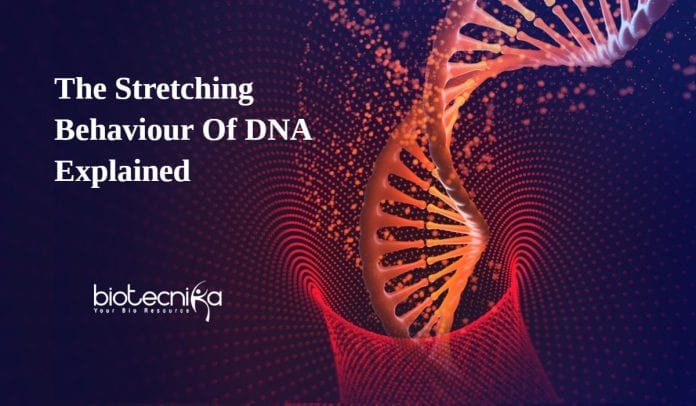Scientists show that the mechanical properties of DNA molecules are completely different from that of macroscopic objects, and this can have crucial consequences in medicine and biology. Now the scientists at TU Wien (Vienna) have combined ideas from physics and civil engineering and succeeded in explaining these properties of DNA.
When we hear the word DNA, what comes to our mind is its double helix structure looking like a tiny little spring that can compress and stretch. But scientists say it’s not that simple. You expect the number of turns in DNA to decrease when you stretch it. But civil engineer Johannes Kalliauer from the Institute of Mechanics of Materials and Structures at TU Wien says the DNA can twist even more when the helix gets longer. And the DNA molecules are more ductile compared to other materials, and they can be 70 % longer under tensile stress.
In biology and medicine, these mechanical properties of DNA can be of great importance. Johannes Kalliauer said the details of the geometry of DNA could determine whether a reading error occurs when the genetic information is read from the DNA molecule in a living cell. Scientists had been using empirical methods until
now to explain the relationship between forces and the geometry of DNA.Johannes Kalliauer got to the bottom of this issue in his dissertation. His work was supervised by both Prof. Gerhard Kahl from the Institute of Theoretical Physics and civil engineer Prof. Christian Hellmich.
Kalliauer and the team reproduced the DNA molecule on an atomic scale on the computer using molecular dynamics methods. He determined how the DNA helices are stretched, compressed, or twisted and then calculated the final position of the atoms and the forces that occur. Only large supercomputers could do such complex calculations, so he used the Vienna Scientific Cluster (VSC) for this purpose.
This way, he was able to explain strange experimental findings like why DNA twists even more when stretched. Johannes Kalliauer said it all makes sense at the atomic level. The interatomic distances and forces can be determined within the atomic models of theoretical physics. Scientists can determine the relevant force quantities required to describe the DNA strand as a whole using certain rules developed by the team based on principles from civil engineering, just like the statics of a beam in civil engineering can be described using some important cross-sectional properties.
The Journal of the Mechanics and Physics of Solids published the latest work, which shows how to combine the small and large in a scientifically exact way and, at the same time, to help to better understand the behavior of DNA —right down to the explanation of hereditary diseases.
Editor’s Note; Mechanical properties of DNA molecules, TU Wien (Vienna), Stretching behavior of DNA






























